Welcome to 6 Bain Ave.
Real Estate News
Condo Showings Permitted During State of Emergency
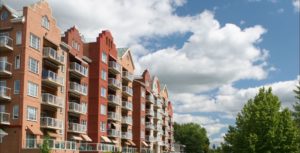
Showings of Condo Properties by REALTORS® Permitted by The Province of Ontario During The State of Emergency
TORONTO, ON – May 5, 2020 – As reports surface of condominium buildings refusing to permit real estate showings during the COVID-19 pandemic, the Ontario Real Estate Association (OREA) is clarifying for REALTORS®, building managers, home buyers and sellers that real estate services are on the provincial government’s list of ‘essential services.’ In-person real estate showings are permitted as long as real estate professionals follow provincial and local public health guidelines on social distancing and other safety measures.
The Ontario Real Estate Association (“OREA”) strongly encourages our Members to counsel their clients to postpone any non-urgent real estate business until after the COVID-19 State of Emergency has been lifted. However, some families and individuals will still need to urgently buy or sell homes including those who have lost their jobs, had a death in the family or who have already purchased a home and need to sell their current home to meet financing obligations.
“OREA urges its Members to follow provincial guidelines around physical distancing and strongly recommends that no face-to-face business is conducted,” said Tim Hudak, OREA CEO. “We have recommended that Realtors work with their clients to find technological alternatives through virtual showings, video conference calls and digital signings. However, for many people in dire circumstances who need to buy or sell a home, an in-person showing is a necessary part of a real estate transaction.”
Condominium managers should allow in-person real estate showings in their buildings. Realtors will continue to prioritize the health and safety concerns of tenants, building occupants and the general public.
In-person open houses are not permitted during the State of Emergency.
The ability of Realtors to do in-person showings during the State of Emergency is supported by the Real Estate Council of Ontario (“RECO”), the delegated administrative authority in the Province, for the regulation of real estate. RECO’s recommendation is “that brokers and salespeople follow the direction of health officials by limiting showings to situations where they are absolutely necessary.”
You can read more about RECO’s position here:
Cleaning Routines to Keep Your Home Virus-Free
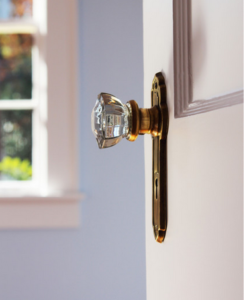
Follow this CDC advice to make sure your kitchen, bathroom and other high-traffic areas are clean and disinfected
We want home to be a haven (especially during stressful times), and part of that, at a fundamental level, means living in a space that helps keep us healthy. According to the most current evidence from the Centers for Disease Control and Prevention, the virus that causes COVID-19 is spread primarily through close personal contact (within about 6 feet). So it’s more important to practice social distancing, not touch your face and wash your hands often and well than it is to be overly concerned about cleaning your house. And although the CDC has not found evidence of surface-to-person transmission to date (which is good news!), the virus may live on surfaces for hours to days, making regular cleaning and disinfecting a wise practice during this time.
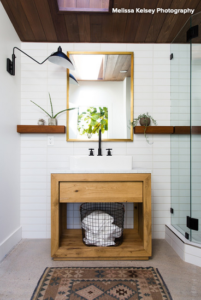
Upgrade Hand-Washing Stations
The CDC recommends washing hands with soap and water for 20 seconds, especially after blowing your nose, coughing or sneezing; before eating or preparing food; and after using the bathroom. Stock up every sink in the house to make hand-washing easier and more sanitary with:
- A bottle of liquid hand soap (anti-bacterial soap not needed)
- Stacks of fresh hand towels and a hamper for dirty towels, or a roll of paper towels and a wastebasket
- A container of sanitizing wipes for daily cleaning of faucets and counters
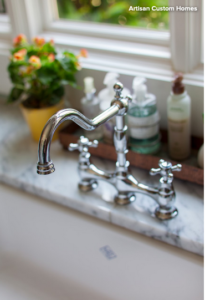
What About Hand Sanitizer?
You can use an alcohol-based hand sanitizer containing at least 60% alcohol when soap and water aren’t available. But if your hands are visibly dirty, the hand sanitizer will not be effective, and hand-washing is recommended.

Know the Difference Between Cleaning and Disinfecting
The important thing to remember is that cleaning should come first — if a surface is dirty, germs can be hiding below the dirt and grime, making disinfecting efforts less effective.
- Cleaning removes dirt, grime and germs — this helps reduce the number of germs.
- Disinfecting actually kills germs on surfaces using chemicals, which helps reduce the risk of spreading infection when done after cleaning.
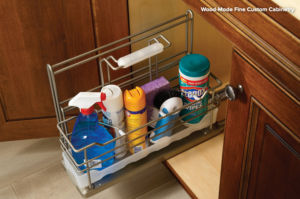
Use the Right Products — and Follow Instructions
When it comes to cleaning, regular soap and water is all you need. But for the second step of disinfecting, it’s important to be sure you’re using the right product. EPA-registered disinfectants (see the current list here) approved to fight the novel coronavirus are what you want to look for. Already have rubbing alcohol or bleach in your cupboards? Either one will fight the COVID-19 virus. (A word of caution on using bleach to clean surfaces: It can discolor laminate and may damage the seal on granite and other stone countertops over time.)
- If surfaces are dirty, remember to clean with soap and water first.
- To prepare a bleach solution, mix 5 tablespoons (⅓ cup) bleach per gallon of water, or 4 teaspoons bleach per quart of water. Never mix household bleach with ammonia or any other cleaners.
- If using rubbing alcohol, choose an alcohol solution containing at least 70% alcohol.
- Check expiration dates. Do not use expired products, as they may not be effective against the COVID-19 virus.
- Follow label instructions. Clorox has issued specific recommendations for preventing the spread of the COVID-19 virus, including leaving bleach solution on surfaces for five minutes.
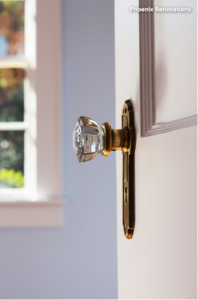
Focus on High-Touch Surfaces
Cleaning and sanitizing the entire house would be overwhelming — and probably excessive. Instead, focus on the surfaces that get lots of contact throughout the day. These areas include doorknobs, light switches, tables, remote controls, handles, desks, toilets and sinks. And if you have kids or housemates who play video games, include those video game controllers.

Start a Just-Got-Home Routine
Put your belongings down in one spot, paying attention to what you carried with you throughout the day — likely suspects include your phone, key ring and sunglasses. Wash your hands for 20 seconds, then wipe personal items with an EPA-registered disinfecting wipe and leave to dry. When cleaning electronics, keep liquids away from openings, never submerge devices, and be especially gentle with touchscreens.
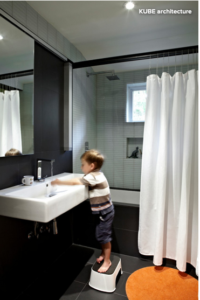
Help Kids Follow the Recommendations
If you have kids at home — especially if they’re not so keen on frequent hand-washing — consider one or more of these to make the ritual more fun:
- Let your child pick out a fragrant hand soap, or put hand soap in a colorful container.
- Tape the verse of a silly song to the mirror so they can sing for the recommended 20 seconds.
- For younger children, cue up a song to sing along to on your phone.
- Be sure a sturdy stool is positioned by every sink in the house to make the soap and water accessible.
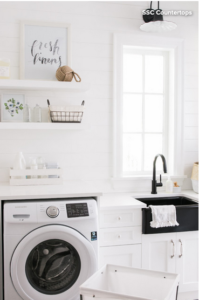
Do the Laundry, Wash Your Hands
If you have a cloth laundry hamper liner, toss it in the wash when you do the laundry. Wash laundry on the warmest setting your clothes and linens can handle, and avoid shaking dirty laundry, which can spread virus through the air. And when you’re done handling dirty clothes and towels, be sure to wash your hands.

If Someone Is Sick, Take Extra Care
If you or someone in your house may be sick, you’ll need to take more precautions. Check the CDC’s recommendations for household members and caregivers on its website. A few of the most important precautions include isolating the sick person in their own room and bathroom, not sharing personal household items, handling their laundry with gloves (and washing your hands afterward) and cleaning high-touch surfaces daily.
These home renovations offer the best financial – and emotional – return on your money — The Globe and Mail
Dream kitchens and luxurious bathrooms are often the go-to renovations for homeowners looking for the best return on investment, but experts suggest the biggest bang for their buck might be as simple as replacing a garage door.
Renovations in Canada are big business, with Canadians spending about $6.3-billion on residential renovations in August, 2019, alone, up from roughly $5.8-billion in the same month the previous year, according to Statistic Canada.
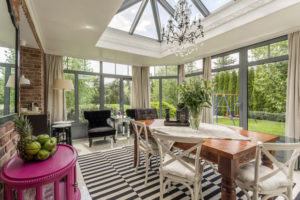
Some projects offer more of an emotional return than financial, according to a report from the Appraisal Institute of Canada. Finishing a basement, adding a garage, building sun rooms, decks or landscaping a yard offer some of the highest enjoyment value.
“When you’re doing renovations, some of them have a different impact and it’s not always about value,” said Dan Brewer, a senior appraiser and former national AIC president.
People often choose to spend tens of thousands – if not more – on renovating a basement to give themselves additional living space, a better play area for kids or a space for extended family to stay when visiting, Mr. Brewer said.
But it also offers “a double-edge benefit,” he said, as buyers tend to pay a little more for homes with finished basements than those without.
Dollar-for-dollar returns tend to come from smaller tweaks, said Pauline Aunger, former president of the Canadian Real Estate Association.
Swapping kitchen hardware, installing new light fixtures or removing outdated decor, such as wallpaper, can help, she said.
Kitchens and bathrooms, on the other hand, often don’t boost the sale price by the cost of the renovation, Ms. Aunger said.
“I always say to people, ‘If you’re going to do a renovation of your kitchen and you’re thinking of selling two years from now: do it now, so you at least enjoyed it for the two years.’
The Toronto Zoo is getting a massive lights show this winter

Courtesy, BlogTO
The Toronto Zoo is giving residents yet another instagrammable experience to add to our holiday bucket lists.
This winter, zoo patrons will be able to venture through the Lumina Night Walk, a 1.5-km light show — expected to take 45 to 60 minutes to navigate — complete with projections, storytelling, music, sound and other multimedia effects.
The show will transport participants to a hopeful, fantastical rendition of the year 2099, “a time when humans and nature have learned to live in harmony.” (Assuming we don’t destroy the planet by then.)
The installation, named Terra Lumina: An Enchanted Night Walk Into A Bright Future, is a project from Montreal-based studio Moment Factory, which has created similar custom lights walks in places like Singapore, Japan, Whistler, Kingston and Mont Tremblant.
Toronto Zoo CEO Dolf DeJong said in a press release that the Lumina brand meshes well with the zoo’s aim to “touch hearts by creating magical moments that inspire guests to make positive change to help the environment.”
Dates are currently unannounced, but tickets are due to go on sale sometime next month.
I’m in the news again! Semi-detached home in The Pocket draws four bids and sells $431,000 over asking
Sydnia Yu, Toronto
Special to The Globe and Mail
Published September 28, 2019
102 Earl Grey Rd., Toronto
Asking price: $999,000
Selling price: $1,430,000
Previous selling price: $374,000 (2004)
Taxes: $4,517 (2018)
Days on the market: Six
Listing agent: Sandra Pate, Royal LePage Real Estate Services Ltd., Johnston and Daniel Division
The action

A spiral staircase between the living and dining areas leads up to the second floor.
An address on a tree-lined street in the much-desired Pocket neighbourhood drew large turnouts at the open houses in the first week of June for this semi-detached house.
There is low turnover in the neighbourhood south of the Danforth near Jones Avenue, making the homes that do come on the market that much more desirable. “This might be the third this year, but we might not see any more,” said agent Sandra Pate, who oversaw four offers for the house.
“There was one that just sold a few doors south of this one and they tried pricing it at a price they were willing to sell it for – and it sat. So, this market is all about pricing low and then you get success, hopefully.”
What they got
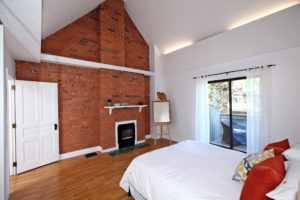
The master bedroom has a balcony.
This turn-of-the-century house has been split into two units; the main suite comprising the first and second floors, and a basement rental apartment. Both are accessed from a front foyer.
The two-storey upper unit has three bedrooms on the second floor, which is accessed via a spiral staircase that stands between the living and dining areas. The master bedroom has a balcony. The modern eat-in kitchen has a walkout to a fenced-in garden.
The one-bedroom basement suite has 10-foot ceilings, a gas fireplace in the main living space and a compact kitchen.
The agent’s take

The modern eat-in kitchen has a walkout to a fenced-in garden.
“Earl Grey is a nice street and the Pocket is such a preferred location, close to the Danforth, shops and subway,” Ms. Pate said.
“The Pocket has its own community vibe with a local paper, movies in the park and they do an event for just about every holiday of the year.”
The house itself is also an anomaly. “It was a bigger semi because it has 20-foot frontage, which doesn’t sound like much, but downtown you could have 13-, 14- or 15-feet frontage,” Ms. Pate said.
“And this one had a rare legal basement apartment … I’ve seen maybe five in 20 years.”